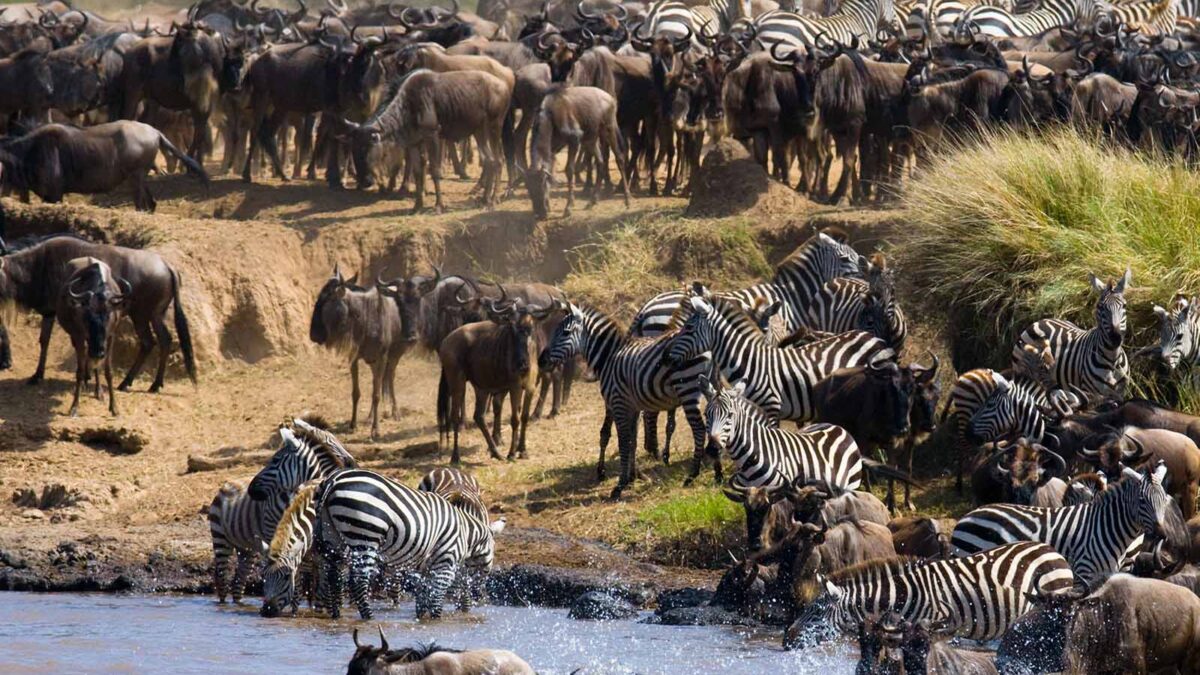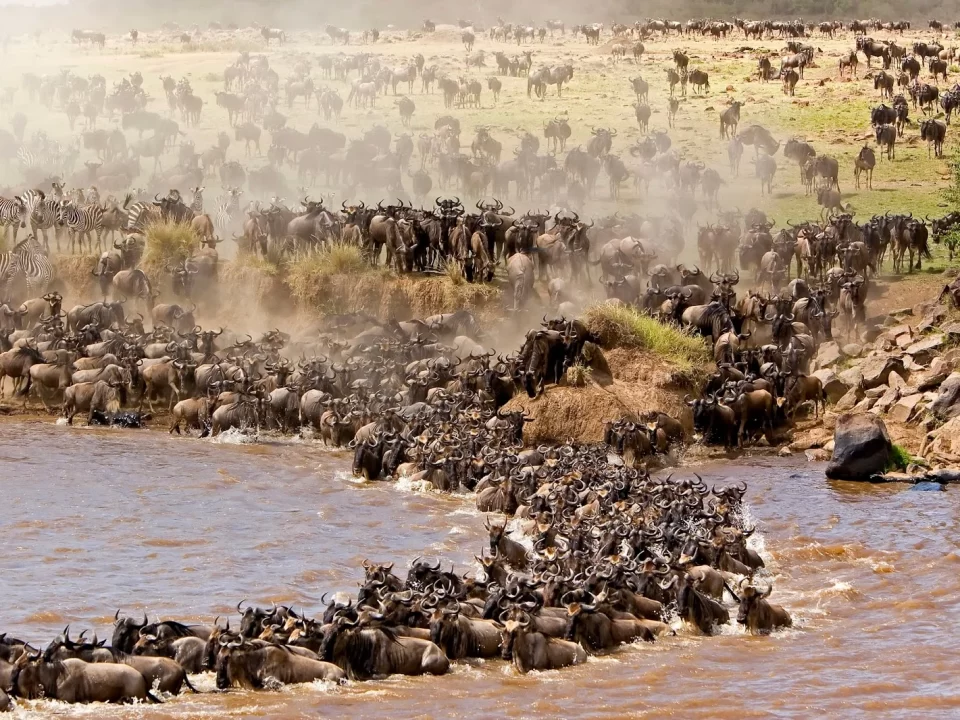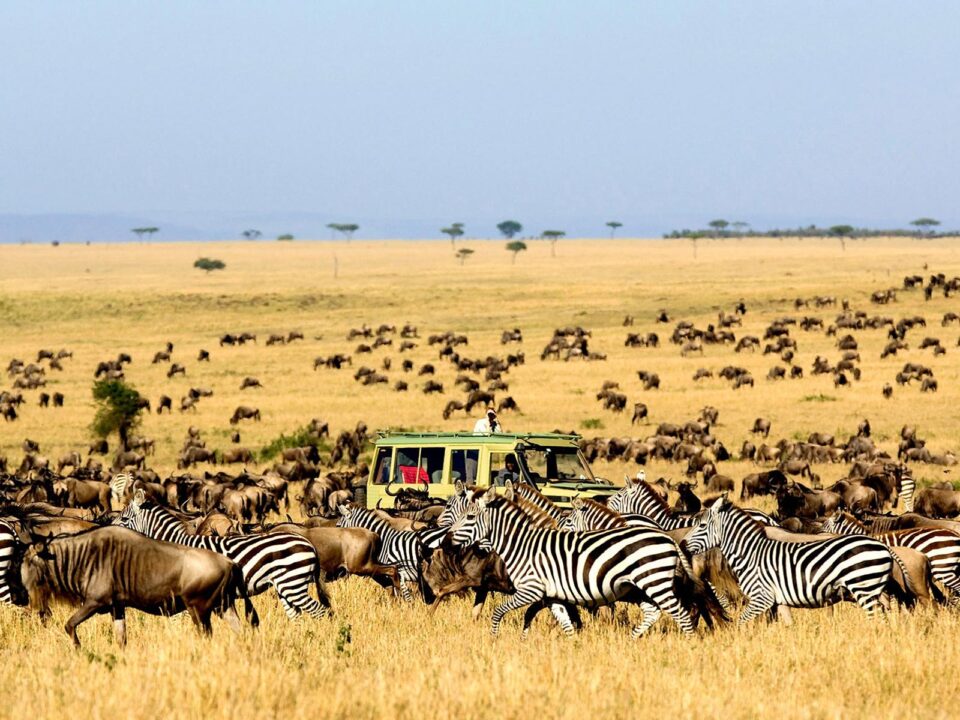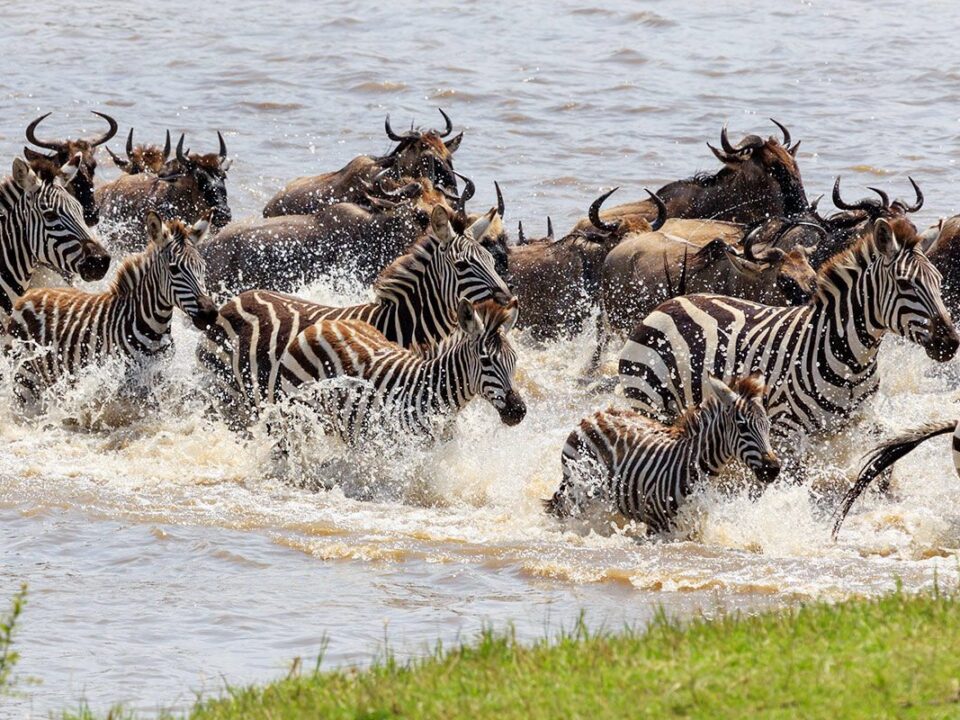Serengeti Wildebeest Migration Safari

Watch Shelly’s Crimson Wing
October 2, 2023
Explore Gisenyi Town
October 2, 2023Embark on a Serengeti Wildebeest Migration Safari and Uncover the Timing of This Natural Marvel in Tanzania
Prepare for an awe-inspiring adventure as you delve into the wonders of the Great Serengeti Wildebeest Migration, a mesmerizing spectacle featuring vast herds of wildebeests accompanied by a multitude of other wildlife, including zebras, Grant’s gazelles, Thomson’s gazelles, elands, and impalas. This annual phenomenon is characterized by the constant movement of these animals, as they tirelessly search for fresh grass and water throughout the year. The timing of the Serengeti Wildebeest Migration is intricately tied to the patterns of rainfall that occur each year, making it a remarkable and ever-changing natural event.
Month by Month Serengeti Wildebeest Migration
The journey of the Serengeti Wildebeest Migration unfolds month by month, as the herds traverse the expansive landscapes of the Serengeti. The adventure begins with the onset of the short rains in early November, followed by a gradual arrival of the wildebeest migration on the short grass plains of Serengeti National Park. These plains are situated to the south and east of Seronera, encompassing Ndutu and the northern region of the Ngorongoro Conservation Area. Here, amid this lush terrain, wildebeests and zebras graze on the fresh, nutritious grass. They remain in these areas from January through March, with the majority of wildebeest calves born in the month of February. As time progresses, they gradually disperse westward across these plains, embarking on their grand journey northward around April.
May witnesses the Serengeti’s wildebeest migration as they migrate northward in search of rejuvenated grazing lands and water sources. The regions around Moru Kopjes and the western area of Seronera come alive with a flurry of movement, as massive columns of wildebeests, accompanied by zebras and scattered Thomson’s and Grant’s gazelles, make their way through.
By June, a portion of the migration has moved north of Seronera, while the majority remains further west. During this time, the Wildebeest migration often pauses on the southern side of the Grumeti River, where several channels impede or slow their northward progress. Here, they gather in the western corridor, often reaching high densities before crossing the river. While the Grumeti River features pools and channels rather than a continuous flow, it nonetheless presents an annual feast for the river’s sizable crocodile population, though not as dramatically spectacular as the Mara River crossings to the north.
July and August see the wildebeest migration continuing its northward journey, with the herds spreading out across a broad front. Some pass through Grumeti Reserve and Ikorongo, while others navigate through the heart of Serengeti National Park.
Come September, the herds fan out across northern Serengeti, facing one of the most challenging obstacles of their migration—the Mara River. This river flows with force through the northern Serengeti National Park, extending from Kenya’s neighboring Masai Mara Game Reserve. Witnessing the frantic herds of the wildebeest migration crossing the Mara River is a spectacle of grand proportions, marked by scenes of intense panic and confusion. It is not uncommon to observe herds crossing northward one day, only to witness them returning southward a few days later.
In October, the wildebeest herds move in more harmonious unison, collectively heading south through western Loliondo and the Lobo Area of Serengeti National Park. This journey eventually leads them back to the lush, green shoots that sprout in the wake of the rains on the short grass plains to the south, marking their return in November.
Prepare to be captivated by the remarkable month-by-month journey of the Serengeti Wildebeest Migration, a natural wonder that unfolds in Tanzania’s Serengeti National Park, offering a breathtaking spectacle of life and survival in the wild.




